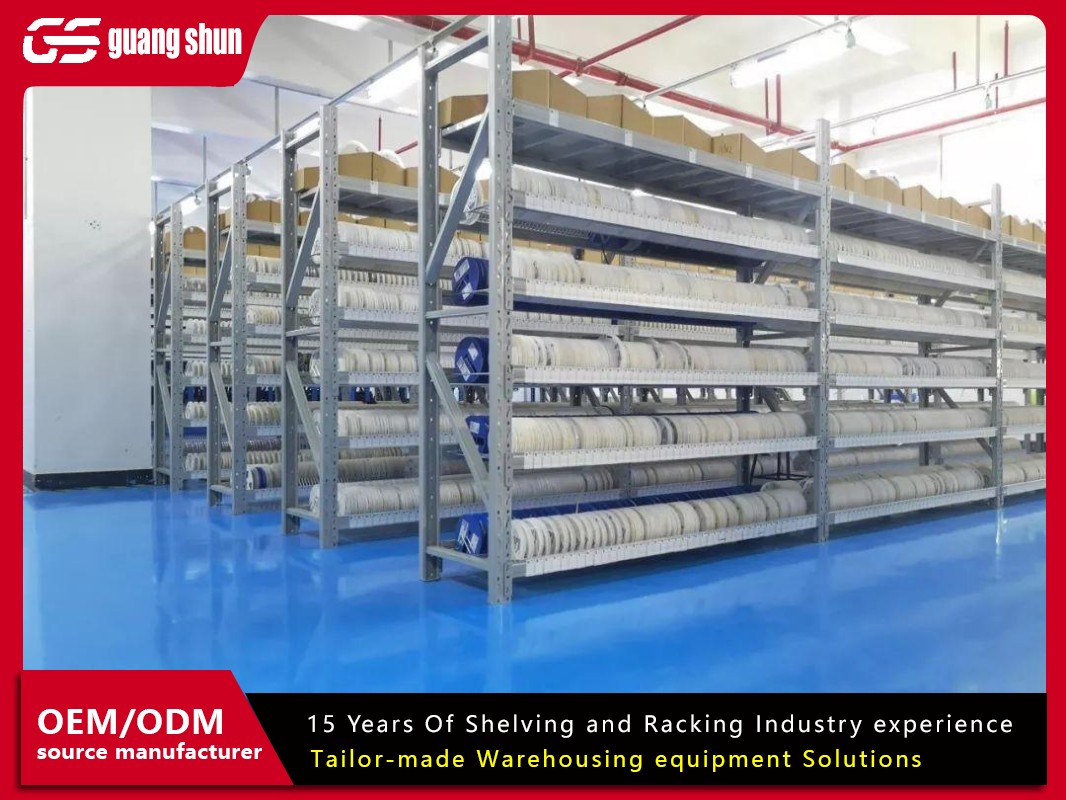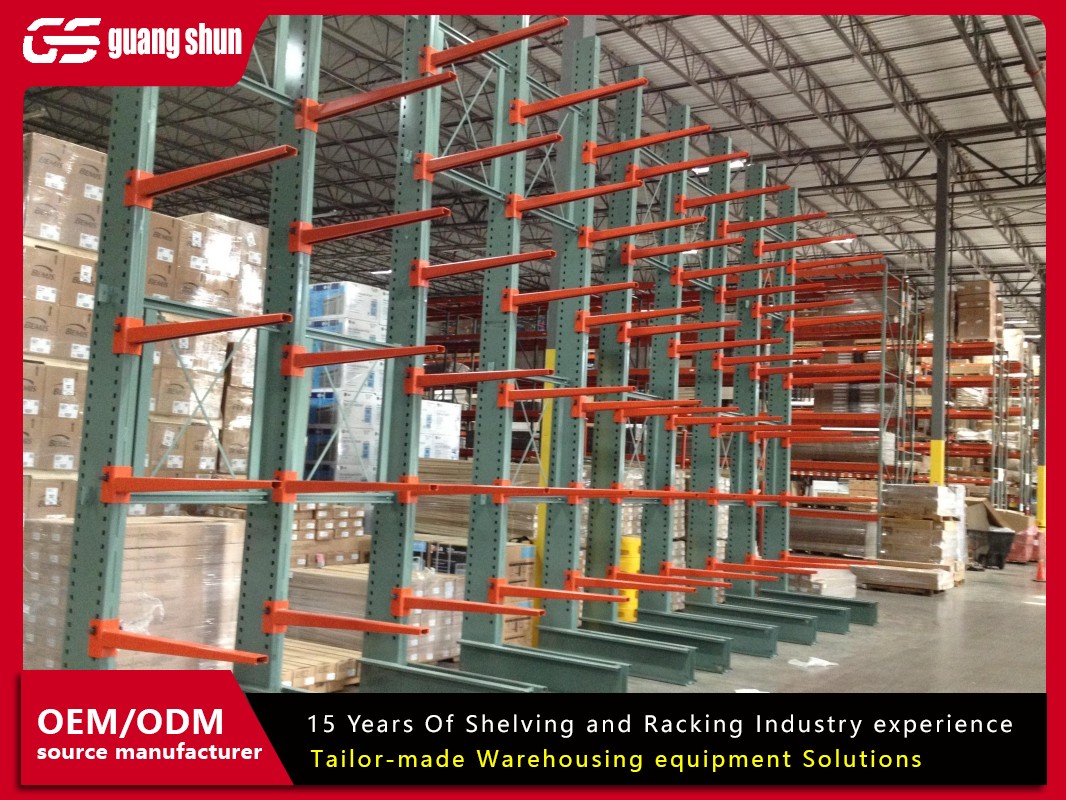If you're in logistics, manufacturing, or any business where space is a premium, you've likely heard the term Hochregallager. Translated from German as "high-bay warehouse," this isn't just a simple shelving unit. A Hochregallager represents a significant leap in storage technology, transforming vertical air space into a highly organized, dense, and often automated storage asset. But is it the right solution for your operation? The decision to invest in a Hochregallager involves substantial capital, precise planning, and a long-term vision. Here are seven critical factors you need to understand, brought to you by the storage solutions experts at Guangshun.

What Exactly is a Hochregallager? Beyond the Basic Definition
At its core, a Hochregallager (plural: Hochregallager) is a storage system characterized by its significant height, typically starting at around 10 meters and reaching up to 45 meters or more. Unlike conventional pallet racking, these are not standalone structures. A true Hochregallager is an integrated system comprising several key components:
Very Narrow Aisle (VNA) Racking: The physical structure is designed for extreme height and density, with aisles often just wide enough for specialized forklifts.
Specialized Material Handling Equipment: This includes narrow-aisle reach trucks, turret trucks, or fully automated stacker cranes that run on fixed rails.
Integrated Warehouse Management System (WMS): The software that acts as the brain of the operation, directing every storage and retrieval move for maximum efficiency.
When people refer to a Hochregallager, they are often describing this complete ecosystem, not just the racking itself.
The Compelling Advantages: Why Companies Choose a Hochregallager
The move to a high-bay warehouse is driven by a clear set of financial and operational benefits.
Maximized Land Utilization: This is the most obvious advantage. By building upwards, you dramatically increase your storage capacity without expanding your building's footprint. This is invaluable in urban areas or on expensive industrial land.
Dramatically Improved Storage Density: A Hochregallager minimizes non-productive aisle space. With VNA design, the cube utilization of your warehouse can exceed 80-85%, a figure unattainable with traditional racking.
Enhanced Inventory Control and Accuracy: The structured nature of a Hochregallager, governed by a WMS, means every pallet has a fixed, known location. This drastically reduces misplacements and improves inventory counting accuracy.
Increased Operational Efficiency and Throughput: Automated systems can retrieve and store pallets 24/7 with incredible speed and precision. This leads to faster order processing, reduced labor costs, and the ability to handle higher volumes.
Superior Safety: By reducing the need for forklifts to navigate wide aisles and by automating many of the high-reach tasks, a well-designed Hochregallager minimizes the risk of accidents, collisions, and product damage.
Is a Hochregallager Right for Your Business? Key Considerations
While the benefits are powerful, a Hochregallager is not a one-size-fits-all solution. Before you commit, ask yourself these questions:
What is your SKU profile? These systems are ideal for high-volume, homogeneous palletized goods. They are less suited for slow-moving items or products with a vast number of unique SKUs in small quantities.
What is your throughput requirement? The high cost of an automated Hochregallager is only justifiable if you have the daily movement volume to support it. Calculate your pallet-in/pallet-out cycles carefully.
Do you have the necessary building specs? Your facility must have the clear height to accommodate the system. Furthermore, the floor must be perfectly level, and the building structure must often be reinforced to handle the immense weight and dynamic loads.
What is your budget for software and integration? The racking and machinery are only part of the cost. The WMS software, its integration with your Enterprise Resource Planning (ERP) system, and ongoing IT support are significant, essential investments.

The Planning and Implementation Process: A Daunting but Manageable Task
Implementing a Hochregallager is a major project that should be handled in phases.
Feasibility Study and Concept Design: This is where a partner like Guangshun adds immense value. We analyze your inventory data, flow rates, and business goals to create a conceptual design and determine the project's viability.
Detailed Planning and Engineering: Every component is specified—rack design, crane specifications, software requirements. Structural calculations are made, and full integration plans are drawn up. This phase is about leaving nothing to chance.
Procurement and Fabrication: High-quality components are crucial. The steel for the racking must be of a specific grade, and the automated equipment must be sourced from reliable manufacturers.
Installation and Commissioning: This is the most critical on-site phase. It involves the precise erection of the racking, installation of cranes and rails, and the integration of all software and controls. The system is thoroughly tested before going live.
Training and Handover: Your team must be trained to operate the system and handle basic troubleshooting. A smooth handover from the project team to your operational staff is key to long-term success.
The Cost Factor: Understanding Your Investment in a Hochregallager
The cost of a Hochregallager can vary wildly, from hundreds of thousands to millions of dollars. Key cost drivers include:
System Height and Capacity: The taller and larger the system, the higher the cost for racking, cranes, and structural reinforcements.
Degree of Automation: A manual VNA system with specialized trucks is less expensive than a fully automated one with stacker cranes.
Software Complexity: The level of integration with your existing systems and the features required in the WMS will impact the price.
Supplier Expertise: Partnering with an experienced supplier like Guangshun, while potentially not the cheapest upfront, ensures quality, reliability, and lower total cost of ownership by avoiding costly errors and downtime.
Why Partner with Guangshun for Your Hochregallager Project?
At Guangshun, we don't just sell racking; we engineer storage solutions. Our approach to a Hochregallager project is defined by:
Holistic Project Management: We manage the entire process from initial data analysis to final commissioning, acting as your single point of responsibility.
Robust Engineering: Our structural engineers design systems that are not only efficient but also certified to meet the highest international safety standards.
Technology-Agnostic Advice: We recommend the best combination of hardware and software for your specific needs, not just the brands we carry.
Long-Term Support: Our relationship doesn't end at installation. We provide ongoing maintenance, spare parts, and software support to ensure your Hochregallager operates at peak performance for its entire lifecycle.
Investing in a Hochregallager is a strategic decision that can redefine your company's logistics capabilities. It offers unparalleled density, efficiency, and control. However, its success hinges on meticulous planning, a significant financial commitment, and, most importantly, the right partner. By thoroughly evaluating your needs and working with an experienced provider like Guangshun, you can ensure that your high-bay warehouse becomes a powerful engine for growth and profitability, not a costly misstep.
Frequently Asked Questions (FAQs)
Q1: What is the minimum clear building height required for a Hochregallager?
A1: While there's no absolute universal minimum, a system is typically considered a true Hochregallager at around 10-12 meters of clear interior height. However, the most significant benefits in terms of density and ROI often start at heights of 15 meters and above. Guangshun can conduct a site survey to determine the optimal height for your specific facility and volume requirements.
Q2: Can an existing warehouse be retrofitted with a Hochregallager system?
A2: It is possible, but it is a complex and costly undertaking. The existing building must be structurally sound enough to support the additional high-level loads, and the roof may need to be raised. A greenfield construction is often simpler, but a detailed structural analysis by Guangshun's engineers can determine the feasibility of a retrofit for your building.
Q3: How does the load capacity of a Hochregallager compare to standard racking?
A3: The static load capacity per pallet location in a Hochregallager can be very high, often matching or exceeding that of standard racking (e.g., 1,000 to 2,000 kg per pallet). The bigger difference is in the dynamic capacity and the engineering required to handle loads at great heights, which involves more robust components and precise calculations to account for seismic and wind forces (even indoors) and the impact of the lifting equipment.
Q4: What kind of maintenance does an automated Hochregallager require?
A4: Automated Hochregallager systems require a rigorous preventive maintenance schedule. This includes regular inspections and servicing of the stacker cranes (motors, drives, sensors), their guide rails, the racking structure for impacts or damage, and the WMS software. Guangshun offers comprehensive service contracts to manage this maintenance, preventing unplanned downtime.
Q5: Are there specific types of pallets that work best in a Hochregallager?
A5: Yes. Consistency and quality are key. Euro pallets or standard GMA pallets in good, consistent condition are essential. Damaged, warped, or non-standard pallets can jam in the system, cause misalignments, and pose a significant safety risk. Most Hochregallager operations implement a strict pallet quality control check at the receiving dock.







